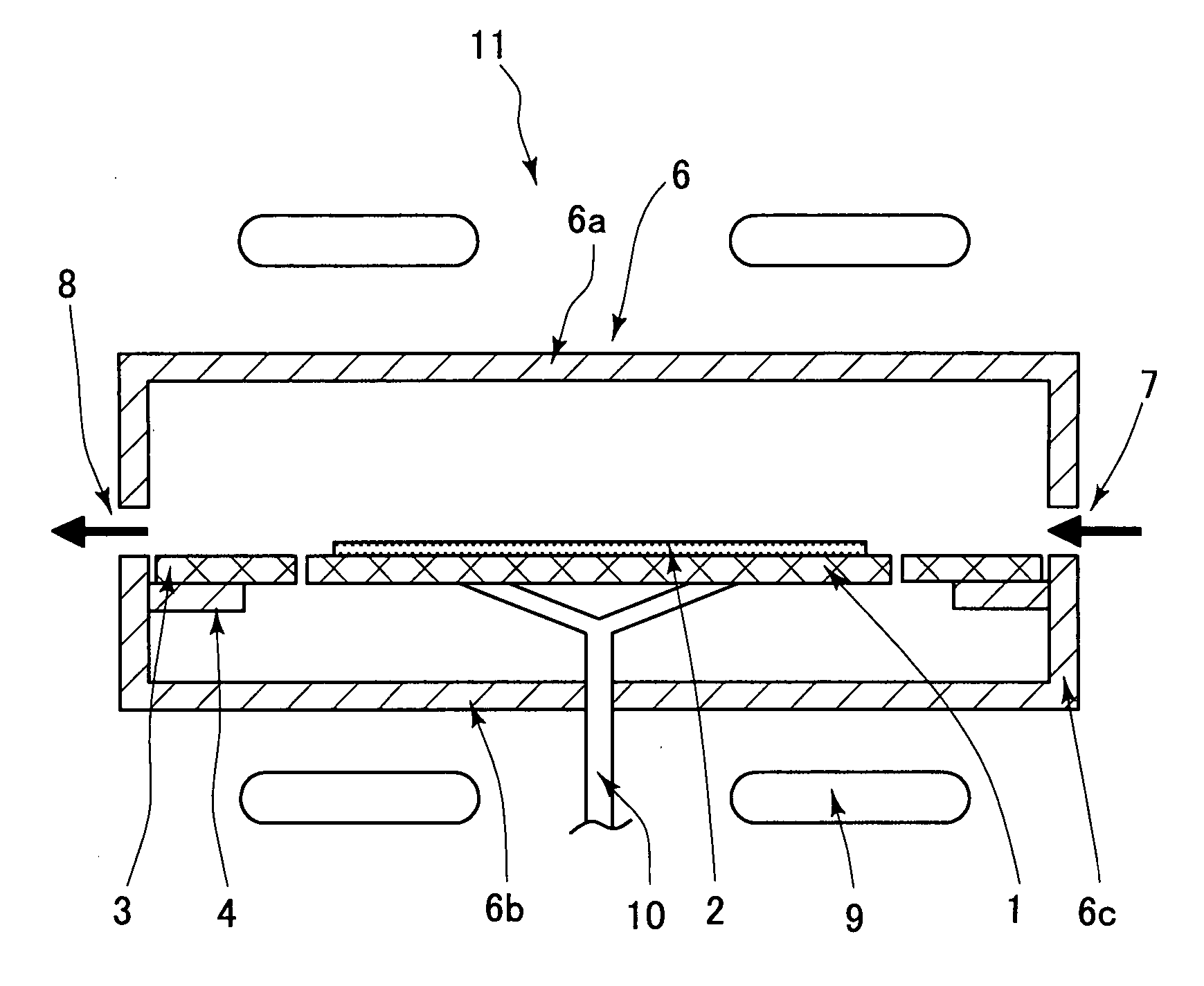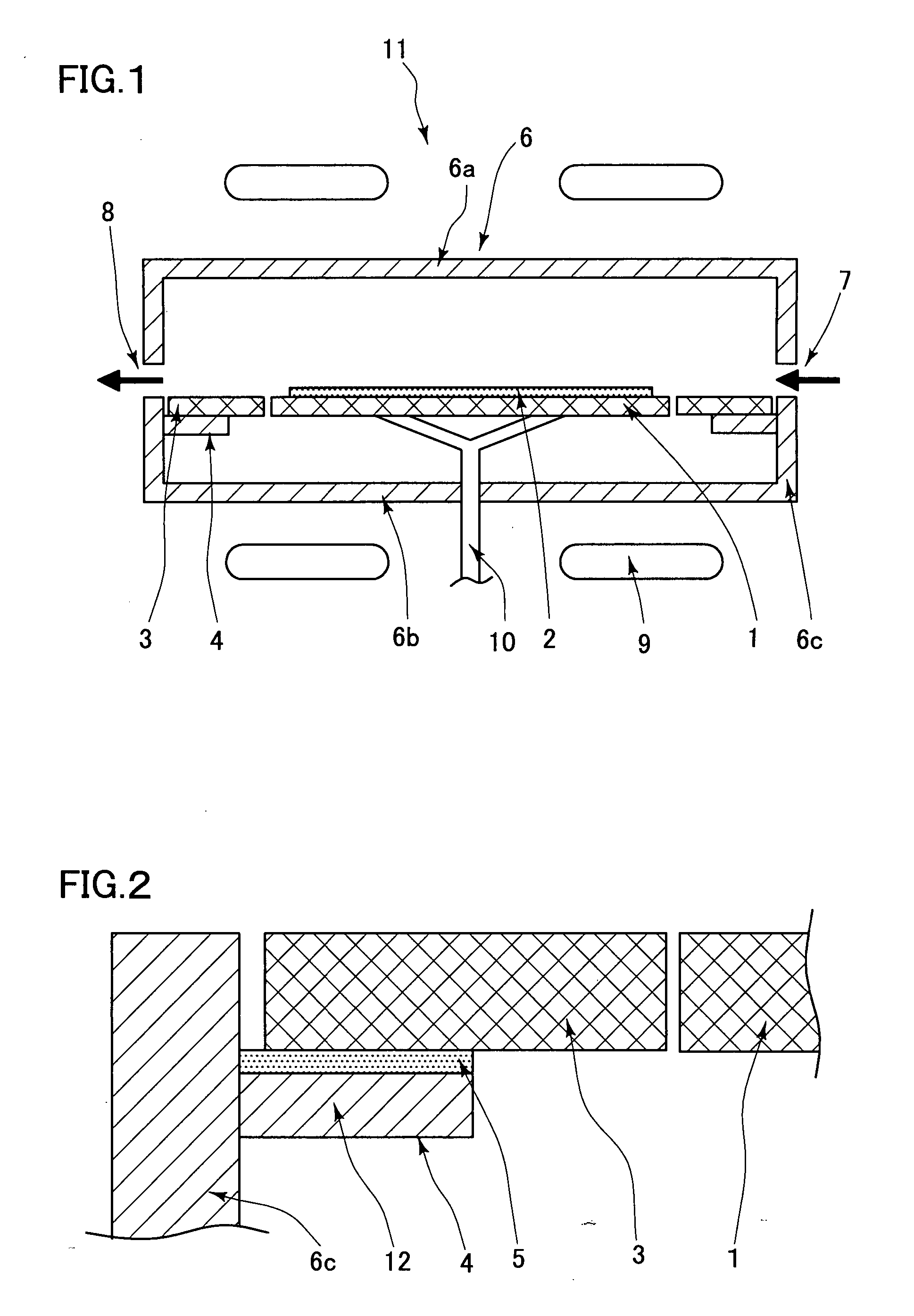Quartz Jig and Semiconductor Manufacturing Apparatus
a semiconductor and manufacturing apparatus technology, applied in the direction of chemically reactive gases, coatings, crystal growth processes, etc., can solve the problems of unable to achieve target process conditions, affecting the quality of semiconductor products, etc., to suppress the pollution of wafers and keep them.
- Summary
- Abstract
- Description
- Claims
- Application Information
AI Technical Summary
Benefits of technology
Problems solved by technology
Method used
Image
Examples
example 1
[0050] A silicon single crystal wafer of a p-conductivity type, 200 mm in diameter and with a crystal orientation was prepared, and loaded into the single-wafer-processing-type CVD apparatus as shown in FIG. 1. A quartz jig used herein in the CVD apparatus was the ring-form jig (see FIG. 2) composed of the opaque quartz, having on the surface thereof, which is brought into contact with the soaking jig, the transparent quartz of 1 mm thick fused therewith. The silicon single crystal wafer loaded into the CVD apparatus was heated to 1,050° C., hydrogen-diluted trichlorosilane as the source gas was introduced into the quartz chamber, and thereby a silicon epitaxial layer of 6 μm thick was grown on the main surface of the wafer. This process was repeated 10 times, and dry etching of the interior of the CVD apparatus was carried out using hydrochloric acid gas. Processing of 10 silicon wafers and a single time of dry etching were carried out in a successive manner.
example 2
[0051] A silicon single crystal wafer same as that described in Example 1 was prepared, and a silicon epitaxial layer was grown to as thick as 6 μm on the main surface of the wafer under same conditions. The quartz jig used herein in the CVD apparatus was a ring-form jig (see FIG. 3) composed of the opaque quartz, having on the entire surface thereof the transparent quartz of 1 mm thick fused therewith.
example 3
[0052] A silicon single crystal wafer same as that described in Example 1 was prepared, and a silicon epitaxial layer was grown to as thick as 6 μm on the main surface of the wafer under same conditions. The quartz jig used herein was a jig (see FIG. 4) composed of the opaque quartz, having on the surface thereof, which is brought into contact with the soaking jig, the transparent quartz of 1 mm thick fused therewith, and notched in a portion thereof which overlaps a transfer path of the wafer.
PUM
| Property | Measurement | Unit |
|---|---|---|
| Temperature | aaaaa | aaaaa |
| Height | aaaaa | aaaaa |
| Transparency | aaaaa | aaaaa |
Abstract
Description
Claims
Application Information
 Login to View More
Login to View More - R&D
- Intellectual Property
- Life Sciences
- Materials
- Tech Scout
- Unparalleled Data Quality
- Higher Quality Content
- 60% Fewer Hallucinations
Browse by: Latest US Patents, China's latest patents, Technical Efficacy Thesaurus, Application Domain, Technology Topic, Popular Technical Reports.
© 2025 PatSnap. All rights reserved.Legal|Privacy policy|Modern Slavery Act Transparency Statement|Sitemap|About US| Contact US: help@patsnap.com



